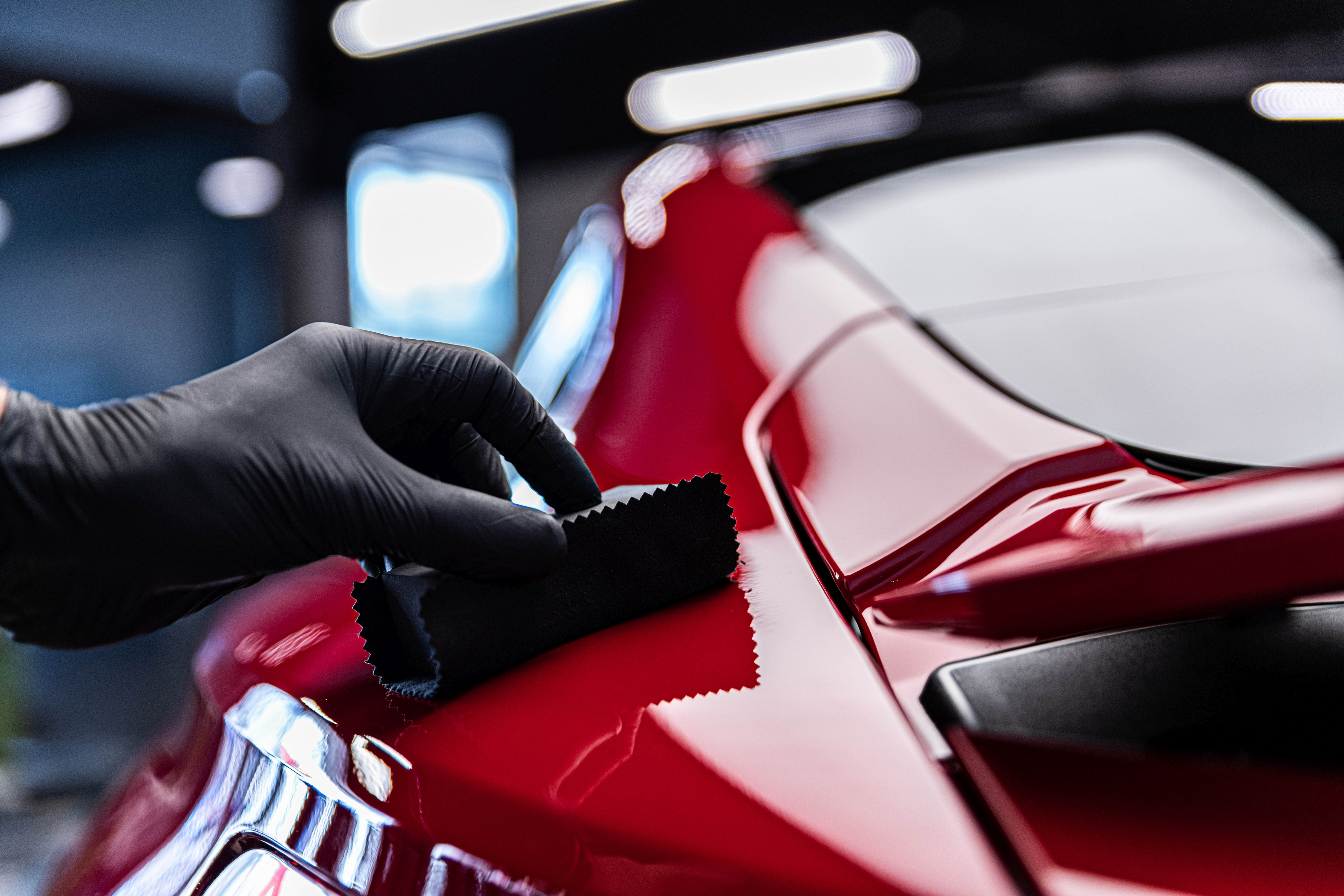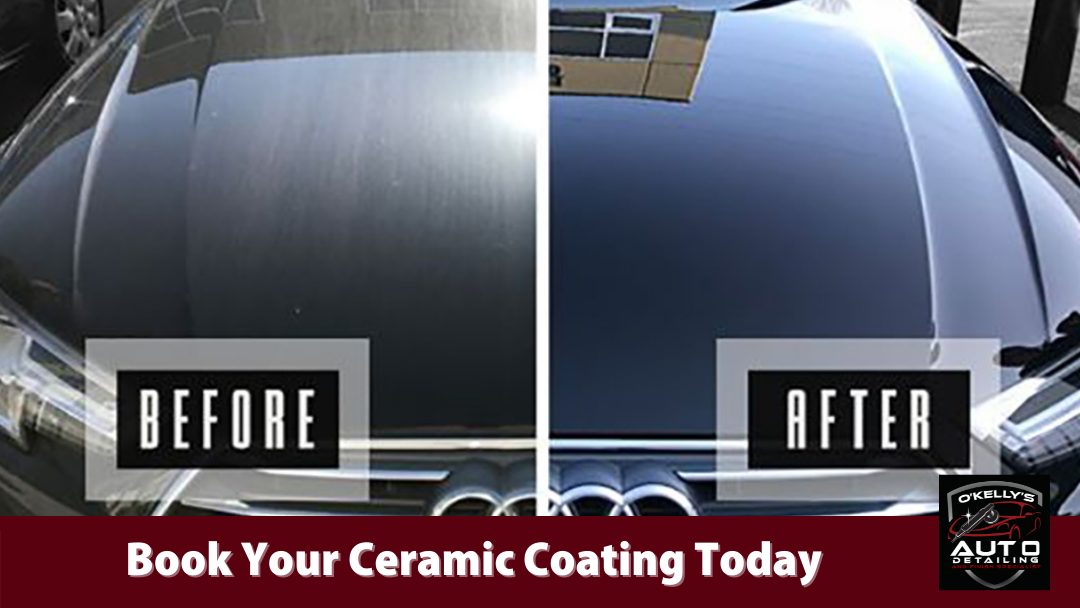Why Ceramic Finish Is the Ultimate Option for a Perfect End Up
Ceramic layer has actually arised as a leading option for those seeking a flawless coating for their automobiles, thanks to its amazing toughness and protective attributes. What variables absolutely established ceramic finish apart?
What Is Ceramic Finish?

When used properly, ceramic layer creates a hydrophobic surface that fends off water and dirt, making it easier to keep and cleanse. Unlike conventional waxes or sealers, which commonly supply temporary protection, ceramic finishings can last for several years, relying on the product quality and application method. The process of using ceramic layer calls for thorough prep work, including complete cleansing and occasionally paint modification, to make certain ideal bonding and effectiveness.
Ceramic layers are not limited to automobile surface areas; they can also be made use of on different materials, consisting of glass, steel, and plastics, providing a flexible remedy for enhancing protection. On the whole, ceramic finish represents a substantial development in surface security technology, incorporating both useful and aesthetic benefits for a large range of applications.
Advantages of Ceramic Coating
While many surface area defense alternatives exist, the advantages of ceramic coating stand apart as a result of its one-of-a-kind buildings and resilient performance. Among the key benefits is its outstanding resilience. Ceramic Coating Philadelphia. Unlike typical wax or sealants that call for frequent reapplication, ceramic coverings give a resistant layer that can last for several years, substantially decreasing maintenance initiatives
An additional significant benefit is enhanced protection versus environmental contaminants. Ceramic coatings create a hydrophobic surface area that repels water, dust, and different pollutants, making it less complicated to clean. This feature not just preserves the vehicle's appearance yet likewise reduces the risk of rust and oxidation, particularly in rough climate condition.
Furthermore, ceramic layers offer exceptional resistance to UV rays, avoiding fading and deterioration of paint in time. This UV security is crucial for preserving the aesthetic worth of surface areas and lorries revealed to route sunshine.
Additionally, the glossy finish achieved with ceramic coating boosts the general visual allure, offering surface areas a showroom-quality shine. On the whole, ceramic finishes stand for a substantial improvement in surface protection technology, providing enduring advantages that deal with both useful and aesthetic needs.
Just How It Works
Recognizing the scientific research behind ceramic finishes reveals exactly how they give such impressive protection and longevity. At its core, a ceramic covering is a fluid polymer that chemically bonds with the lorry's manufacturing facility paint.
The application procedure includes multiple steps, including surface area prep work, which is important to attaining optimum attachment. As soon as used, the covering undergoes a healing process, during which moved here it solidifies and forms a semi-permanent bond with the paint surface area. This bond is what differentiates ceramic coverings from typical waxes and sealants, offering a longer-lasting safety obstacle that can endure for years.
Additionally, the thickness of the finishing can boost its safety top qualities, making certain that it can endure severe conditions. Eventually, the science of ceramic coverings incorporates innovative materials with innovative application strategies to provide an exceptional level of security and visual improvement for automobiles.
Contrast With Conventional Methods
When contrasted to typical paint protection techniques such as waxes and sealants,The advantages of ceramic layers end up being especially obvious. While waxes use a momentary luster, commonly lasting a couple of weeks to a number of months, ceramic coverings give a durable safety layer that link can withstand for numerous years. This sturdiness dramatically decreases the regularity of reapplication, making ceramic coverings a more affordable option gradually.
In addition, typical approaches frequently require considerable preparation and several applications to achieve an adequate degree of defense. On the other hand, ceramic coatings bond at a molecular degree with the vehicle's surface area, developing a durable guard versus ecological contaminants like UV rays, acid rainfall, and road salts. This bond improves the automobile's resistance to scrapes and swirl marks, which prevail with typical waxes and sealers.
Additionally, the hydrophobic residential properties of ceramic coverings drive away water and dirt, bring about easier cleaning and maintenance. On the other hand, wax and sealant-treated surfaces can draw in grime, necessitating even more constant cleaning - Ceramic Coating Philadelphia. In general, ceramic finishings not just give remarkable protection but additionally deliver a more long-lasting and visually attractive coating, establishing them as the preferred choice for discerning lorry proprietors
Application and Upkeep Tips

Making use of a foam applicator, use the covering in tiny sections, complying with the manufacturer's guidelines pertaining to density and overlap. Allow adequate curing time in between coats, generally 24 hr, to make certain appropriate bonding. After application, it is crucial to avoid exposure to water or extreme components for at the very least a week to enable the finish to totally treat.
Additionally, utilizing a ceramic upkeep spray can boost the finish's hydrophobic residential or commercial properties and longevity. Routine examinations for any type of indications of wear will help preserve the coating's honesty and preserve that pristine finish.
Conclusion
In conclusion, ceramic coating arises as a superior option for accomplishing a flawless vehicle coating. By creating a robust bond with manufacturing facility paint, ceramic coating properly shields versus scratches, UV rays, and ecological pollutants.
